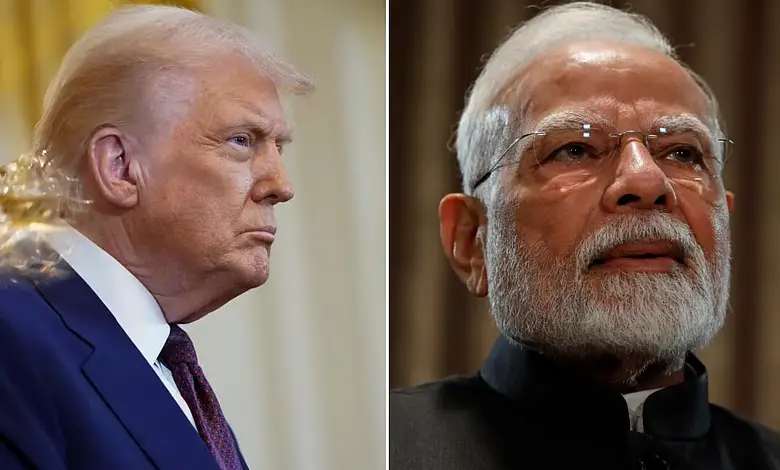S&P Global has lifted India’s sovereign credit rating to BBB from BBB-, pointing to strong growth dynamics, improved monetary policy credibility, and a clearer fiscal roadmap for Asia’s third-largest economy. The upgrade arrives even as former US President Donald Trump has announced 50% tariffs on Indian exports and derided India as a “dead economy,” marking what is reportedly the country’s first ratings upgrade in nearly 19 years. A sovereign rating signals a nation’s capacity and willingness to repay debt, shaping investor perception and lending risk.
Why S&P Upgraded India
- S&P cites India’s resilient expansion, supported by a more credible inflation framework and the government’s stated path to fiscal consolidation and better-quality spending, which together strengthen the country’s credit profile.
- The agency expects limited fallout from prospective US tariffs, noting India’s lower trade dependence and the dominance of domestic consumption, which contributes about 60% to growth. Even if New Delhi had to pivot away from Russian crude, the fiscal hit would likely be modest due to a narrow price gap with global benchmarks.
- While the US is India’s largest trading partner, S&P estimates that exports to America comprise roughly 2% of India’s GDP; after accounting for sectoral exemptions such as pharmaceuticals and consumer electronics, the affected share falls to about 1.2% of GDP. The shock may trim growth in the short term but is unlikely to derail India’s broader trajectory.
- Some global institutions and analysts have projected up to a 0.3 percentage-point drag on GDP from US trade actions, but S&P maintains that India’s medium-term outlook remains robust.
Key Growth Drivers Highlighted
- India remains among the world’s top growth performers, rebounding strongly post-pandemic, with real GDP growth averaging 8.8% from FY22 to FY24 leading the Asia-Pacific region.
- The economy’s size has expanded substantially since COVID-19 about 80% larger in rupee terms and nearly 50% in dollar terms while growth moderates to a more sustainable, high pace.
- S&P projects GDP growth of about 6.8% annually over the next three years, helping stabilize the debt-to-GDP ratio despite sizeable fiscal gaps.
- Structural strengths favorable demographics and competitive labor costs underpin the outlook, though sustained high growth is needed to create jobs, reduce inequality, and fully leverage the demographic dividend.
- Corporate and financial sector balance sheets have improved versus pre-pandemic conditions, supporting investment and credit transmission.
- Fiscal fragilities have historically weighed on India’s ratings, but a clearer if gradual consolidation strategy is emerging as growth firms up; S&P sees the general government deficit easing from 7.3% of GDP in FY26 to 6.6% by FY29.
- Spending quality has improved over the past five to six years, with a greater focus on infrastructure; central government capex is expected to reach ₹11.2 trillion (about 3.1% of GDP) in FY26, up from 2% a decade ago.
- Including states, total public infrastructure investment could be around 5.5% of GDP on par with or above peers helping unclog bottlenecks and lifting long-run potential.
- Inflation targeting has anchored expectations more firmly than a decade ago; despite global commodity swings, CPI has averaged about 5.5% over the past three years and has recently hovered near the lower end of the RBI’s 2%–6% target band, aided by deeper domestic capital markets.
- India’s sovereign profile benefits from a dynamic, fast-growing economy, a strong external balance sheet, and democratic institutions that support policy continuity offset by weak public finances, elevated debt, and low per-capita income.
Politics, Policy, and the Road Ahead
S&P notes that the general election delivered Prime Minister Narendra Modi a third term, with the BJP leading but forming a coalition for the first time in its current tenure. A stable majority in the Lok Sabha is seen as supportive of ongoing reforms. Since 1991’s liberalization, India has maintained high growth under varying political coalitions, reflecting broad policy consensus.
A key test will be financing large-scale infrastructure without meaningfully widening the current account deficit. If fiscal consolidation advances alongside investment, ratings support could strengthen. S&P’s stable outlook reflects confidence that policy continuity, infrastructure push, and prudent fiscal-monetary management can offset high debt and interest burdens over the next two years.
An upgrade is possible if deficits shrink materially, driving the net change in general government debt below 6% of GDP, with persistent infrastructure-led growth and fiscal reforms reinforcing public finances. Conversely, a weakening commitment to fiscal repair or a sharp, sustained growth slowdown that endangers fiscal sustainability could trigger a downgrade.
